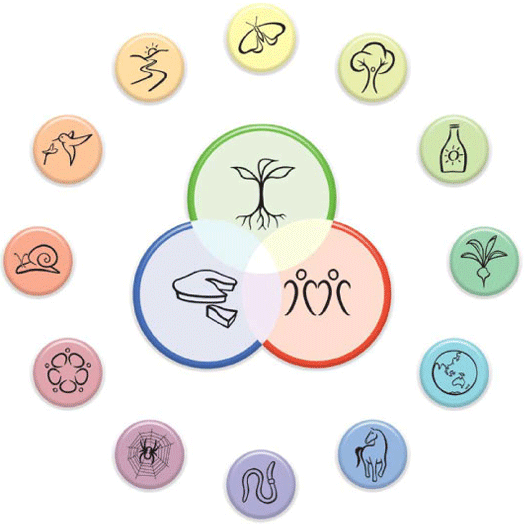Permaculture is a design system based on ethics and design principles which can be used to establish, design, manage and improve all efforts made by individuals, households and communities towards a sustainable future. The permaculture flower uses the evolutionary spiral path to link together the key domains required for this change.
These concepts are adapted from Permaculture Principles & Pathways Beyond Sustainability by permaculture co-originator David Holmgren.
The 12 permaculture design principles are thinking tools, that when used together, allow us to creatively re-design our environment and our behaviour in a world of less energy and resources.
 These principles are seen as universal, although the methods used to express them will vary greatly according to the place and situation. They are applicable to our personal, economic, social and political reorganisation as illustrated in the permaculture flower.
These principles are seen as universal, although the methods used to express them will vary greatly according to the place and situation. They are applicable to our personal, economic, social and political reorganisation as illustrated in the permaculture flower.
The ethical foundation of permaculture (centre) guides the use of these design tools, ensuring that they are used in appropriate ways.
Each principle can be thought of as a door that opens into whole systems thinking, providing a different perspective that can be understood at varying levels of depth and application.


